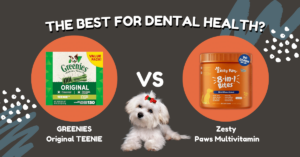Living with a dog can be a source of joy and companionship for many people. However, for those with allergies, it can also be a source of discomfort and health issues. This is where hypoallergenic dog breeds come into play. These dog breeds are known to produce fewer allergens, making them suitable for people with allergies. In this article, we will explore the pros and cons of living with hypoallergenic dog breeds, helping you make an informed decision if you are considering getting a dog but have allergies.
Definition of Hypoallergenic Dog Breeds
Hypoallergenic dog breeds are breeds that produce fewer allergens compared to other dog breeds. They are not completely allergen-free, but they tend to have lower levels of allergens in their fur, saliva, and dander. Allergens are substances that trigger allergic reactions in some individuals, causing symptoms such as sneezing, itching, and watery eyes. Hypoallergenic dog breeds are often sought after by people with allergies as they may cause fewer or milder allergic reactions compared to non-hypoallergenic breeds.
Popular Hypoallergenic Dog Breeds
There are several popular hypoallergenic dog breeds that are known for their low allergen production. Some of the most popular ones include:
- Poodle: Poodles are highly intelligent and energetic dogs that come in different sizes, including toy, miniature, and standard. They have a curly coat that doesn’t shed much, which helps reduce allergens in the environment.
- Bichon Frise: Bichon Frise is a small dog breed known for its fluffy, curly coat. They are friendly and affectionate dogs that are suitable for families with allergies.
- Maltese: Maltese is a small dog breed known for its long, silky white coat. They are gentle and playful dogs that are considered hypoallergenic due to their low shedding and dander production.
- Schnauzer: Schnauzers are small to medium-sized dogs that come in three sizes: miniature, standard, and giant. They have a wiry coat that doesn’t shed much, making them hypoallergenic for some people.
- Yorkshire Terrier: Yorkshire Terrier, or Yorkie, is a small dog breed known for its long, silky coat. They are energetic and confident dogs that are considered hypoallergenic due to their low shedding and dander production.
Pros of Living with Hypoallergenic Dog Breeds
Reduced Allergies
One of the main advantages of living with hypoallergenic dog breeds is the reduced risk of allergies. These breeds produce fewer allergens, which are the substances that trigger allergic reactions in sensitive individuals. This means that people with allergies may experience fewer or milder symptoms when living with a hypoallergenic dog. It can greatly improve their quality of life and allow them to enjoy the companionship of a dog without suffering from constant allergic reactions.
Less Shedding
Another benefit of hypoallergenic dog breeds is that they tend to shed less compared to non-hypoallergenic breeds. Shedding is the process of a dog losing its fur, and the shed fur can contain allergens that can trigger allergies in sensitive individuals. Hypoallergenic breeds often have hair instead of fur, which grows continuously and does not shed as much. This means that there will be fewer allergens in the environment, making it more tolerable for people with allergies.
Lower Dander Levels
Dander refers to tiny flakes of skin that are shed by animals, including dogs. Dander can contain allergens that can trigger allergic reactions in sensitive individuals. Hypoallergenic dog breeds tend to have lower dander levels compared to non-hypoallergenic breeds, which can be beneficial for people with allergies. Lower dander levels mean fewer allergens in the air and on surfaces, reducing the risk of allergic reactions.
Lesser Risk of Asthma Attacks
Asthma is a respiratory condition that can be triggered by allergens, including those produced by dogs. For people with asthma, living with a hypoallergenic dog breed may be beneficial as it can reduce the risk of asthma attacks. The lower allergen production and shedding of hypoallergenic breeds can help create a more asthma-friendly environment, allowing people with asthma to live comfortably with a dog.
Cons of Living with Hypoallergenic Dog Breeds
While there are many advantages of living with hypoallergenic dog breeds, it’s important to consider the potential drawbacks as well. Here are some cons to be aware of:
Limited Breed Choices
One of the main drawbacks of hypoallergenic dog breeds is that the choices may be limited compared to non-hypoallergenic breeds. Hypoallergenic breeds are not as common as other breeds, and they may not come in as many varieties in terms of size, coat type, and temperament. This means that if you have a specific preference for a certain type of dog, you may have limited options when considering hypoallergenic breeds.
Potential for Allergies
Although hypoallergenic dog breeds are known for producing fewer allergens, it’s important to note that they are not completely allergen-free. Different individuals may have different sensitivities to allergens, and some people may still experience allergic reactions when living with a hypoallergenic dog. It’s important to spend time with the specific breed you are considering and monitor your reactions before making a decision, especially if you have severe allergies.
Grooming Needs
Hypoallergenic dog breeds often have unique coat types that require special grooming care. For example, breeds with hair instead of fur may need regular haircuts to prevent matting and tangling. This means that grooming needs may be more demanding compared to non-hypoallergenic breeds, and it may require additional time and effort to keep the dog’s coat in good condition.
Exercise Requirements
Like all dogs, hypoallergenic breeds also require regular exercise to stay healthy and happy
Exercise Requirements
Like all dogs, hypoallergenic breeds also require regular exercise to stay healthy and happy. However, some hypoallergenic breeds may have specific exercise needs that can be challenging for certain individuals or families. For example, some breeds may require more physical activity or mental stimulation compared to others, and this can be a consideration when choosing a hypoallergenic breed. It’s important to research and understand the exercise requirements of the specific breed you are considering to ensure that you can meet their needs.
Cost
Another potential con of living with hypoallergenic dog breeds is the cost associated with them. Hypoallergenic breeds are often more expensive compared to non-hypoallergenic breeds due to their rarity and unique coat types. In addition, the grooming needs of hypoallergenic breeds may also add to the overall cost of ownership. It’s important to budget for potential higher expenses when considering a hypoallergenic breed and be prepared for the financial commitment.
Availability
As mentioned earlier, hypoallergenic dog breeds are not as common as non-hypoallergenic breeds, which means that finding a hypoallergenic breed may be more challenging. Depending on your location and availability, it may require more effort and time to find a reputable breeder or rescue organization that has hypoallergenic breeds available for adoption. This can be a consideration when looking for a hypoallergenic dog as a potential pet.
Conclusion
Living with hypoallergenic dog breeds can have both pros and cons. On the positive side, reduced allergies, less shedding, lower dander levels, and a lesser risk of asthma attacks can make living with a hypoallergenic dog more comfortable for people with allergies or asthma. However, on the negative side, limited breed choices, potential for allergies, grooming needs, exercise requirements, and cost can be considerations to take into account when considering a hypoallergenic breed.
It’s important to thoroughly research and understand the specific breed you are considering, spend time with the dog before making a decision, and ensure that you can meet their needs in terms of grooming, exercise, and overall care. If you have allergies or asthma, consulting with your healthcare provider before bringing a dog into your home is also recommended.
for people with allergies or asthma? No, hypoallergenic dog breeds are not the only option for people with allergies or asthma. There are other ways to manage allergies, such as regular grooming, vacuuming, using air purifiers, and taking medications as prescribed by a healthcare provider. It’s important to explore all options and choose what works best for your individual needs and lifestyle.
In conclusion, living with hypoallergenic dog breeds can have both advantages and disadvantages. While they can be a great option for individuals with allergies or asthma due to their reduced allergen levels and shedding, other factors such as grooming needs, exercise requirements, cost, and availability should also be considered. Thorough research, spending time with the dog before making a decision, and consulting with a healthcare provider are essential steps to ensure that a hypoallergenic dog is a suitable choice for you and your family.
FAQs (Frequently Asked Questions)
- Can hypoallergenic dog breeds guarantee that I won’t have any allergies? No, hypoallergenic dog breeds can produce fewer allergens, but they are not completely allergen-free. Different individuals may have different sensitivities to allergens, and some people may still experience allergic reactions with hypoallergenic breeds.
- Are all hypoallergenic dog breeds the same in terms of shedding and dander levels? No, hypoallergenic dog breeds can vary in terms of shedding and dander levels. Some may shed less and have lower dander levels compared to non-hypoallergenic breeds, but it’s important to research and understand the specific breed you are considering.
- Are hypoallergenic dog breeds suitable for everyone? No, hypoallergenic dog breeds may not be suitable for everyone. While they may be a good option for people with allergies or asthma, other factors such as grooming needs, exercise requirements, and cost should also be considered before making a decision.
- Are hypoallergenic dog breeds only available from breeders? No, hypoallergenic dog breeds can also be found in rescue organizations and shelters. Adoption can be a great way to provide a loving home to a dog in need and potentially find a hypoallergenic breed.
- Are hypoallergenic dog breeds the only option for people with allergies or asthma? No, hypoallergenic dog breeds are not the only option for people with allergies or asthma. There are other ways to manage allergies, such as regular grooming, vacuuming, using air purifiers, and taking medications as prescribed by a healthcare provider. It’s important to explore all options and choose what works best for your individual needs and lifestyle.
In conclusion, living with hypoallergenic dog breeds can be a positive experience for individuals with allergies or asthma, but it’s important to consider all aspects, including grooming needs, exercise requirements, cost, and availability. Thorough research and consultation with a healthcare provider can help you make an informed decision and find the right hypoallergenic dog breed that fits your lifestyle and needs.









